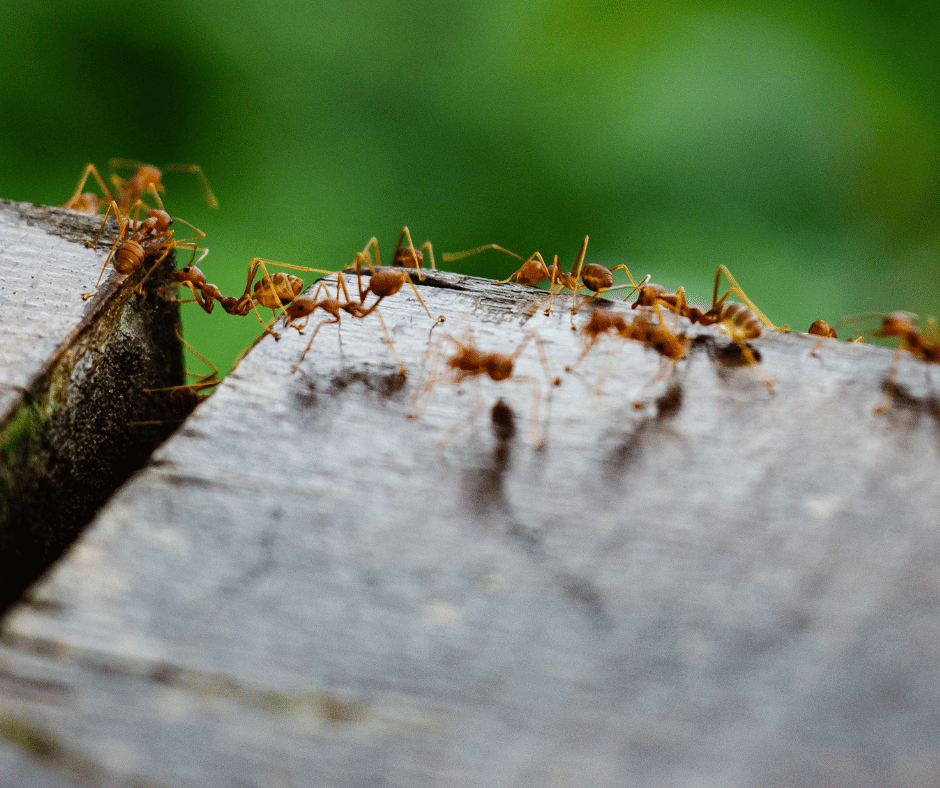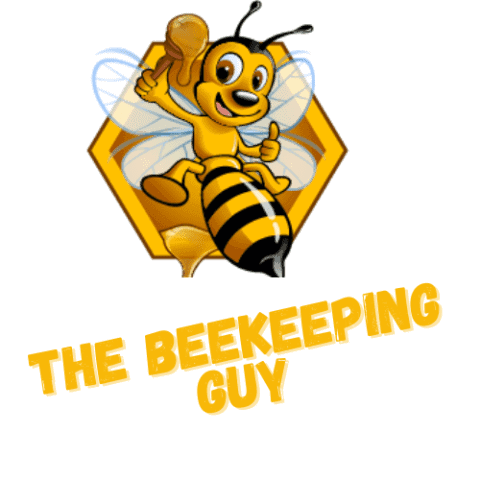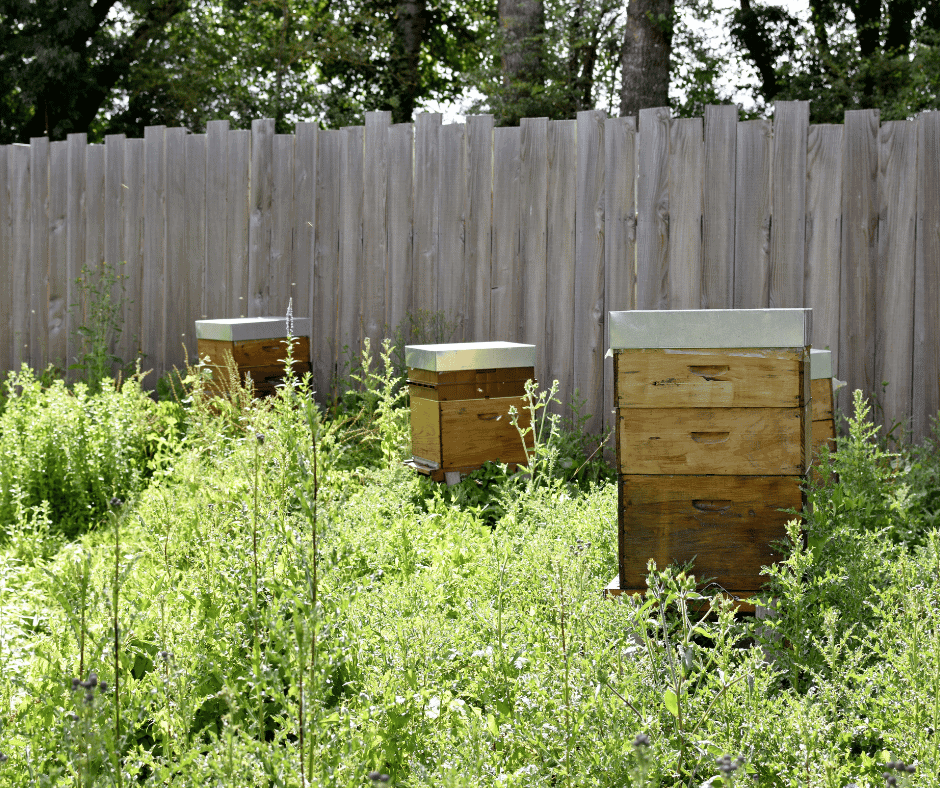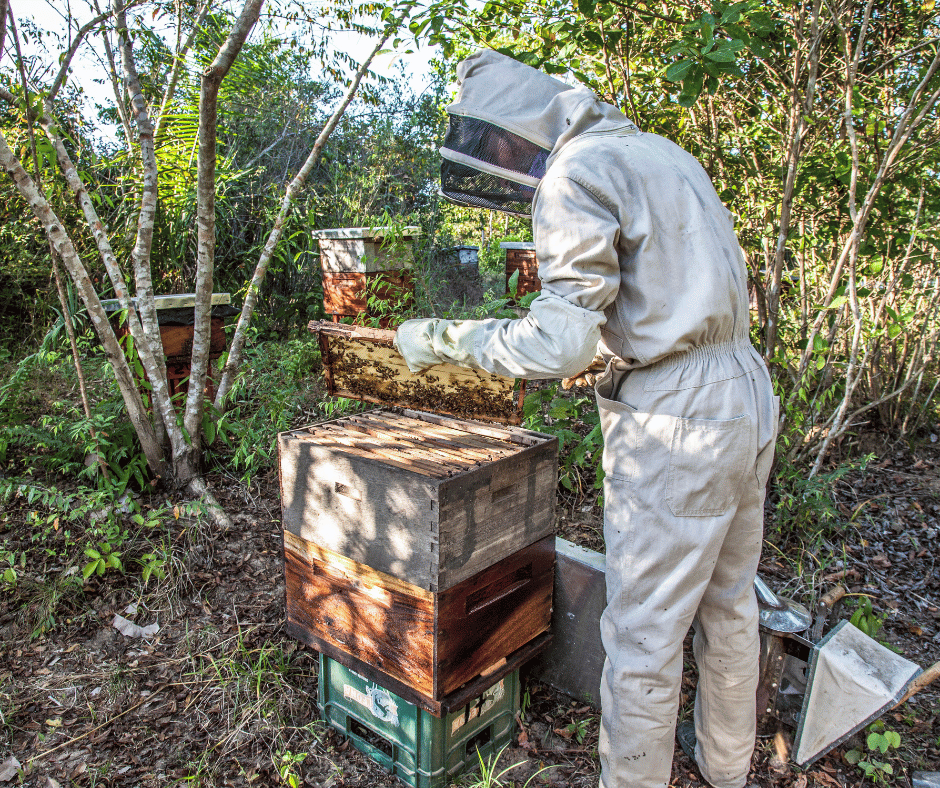
As a beekeeper, I know firsthand the joy and satisfaction that comes from nurturing a thriving beehive. Not only am I helping to maintain the delicate balance of our ecosystem, but I’m also contributing to the well-being of my community by providing honey and other valuable bee products.
However, one challenge that often threatens the harmony of my buzzing friends is an unwelcome invasion of ants. These tiny intruders can wreak havoc on a beehive, causing stress for both me and my bees.
In order to serve my bees better and protect their home from potential harm, I’ve done extensive research on keeping ants out of beehives. By sharing this knowledge with fellow beekeepers and enthusiasts alike, we can all work together to create safe havens for these essential pollinators.
In this article, you’ll find information on how to identify ants in your beehive, preventive measures you can take to keep them out, various methods for setting up barriers and employing natural repellents, as well as tips on regular inspections so we can continue making the world a sweeter place one hive at a time!
Table of Contents
Identifying Ants in Your Beehive

You might notice ants crawling around the hive entrance or on the outer surfaces, and they could even be carrying off bee larvae or honey as a prize for their hard work. Keep an eye out for any signs of beehive damage, such as weakened structure or moisture issues, which can make it easier for ants to infiltrate.
This unwanted stress on your bees could result in decreased honey production, absconding (when bees abandon their hive), or even death due to fights between the two insect species.
Now that we’ve identified whether you’re dealing with an ant infestation within your beehive, it’s time to take action! In order not only to help our hardworking bee friends but also to preserve their honey-making abilities and overall health, we’ll explore preventive measures that will keep those unwelcome guests away from your colony while protecting these vital pollinators at the same time!
Preventive Measures to Keep Ants Out
As a dedicated beekeeper, I’ve discovered that using ant-resistant materials, implementing a strategic hive location strategy, and planting bee-friendly plants can significantly reduce the risk of ants invading my honeybees’ haven.
By staying vigilant and proactive in these preventive measures, we can ensure our hives remain healthy and productive. One effective approach to keeping ants at bay is selecting the right location for your hive. Place it in an open area with ample sunlight exposure to discourage ants from setting up camp nearby.
Ants are also less likely to traverse damp or wet ground; therefore, consider placing your hive near water sources such as ponds or streams. In addition, surrounding your beehive with bee-friendly plants not only creates a happy environment for your bees but also deters ants by providing fewer nesting sites and resources for them.
As we continuously strive to protect our precious pollinators, know that prevention is just the beginning of defending our hives against unwelcome intruders like ants. Now let’s delve into another essential aspect: setting up barriers to keep those pesky pests at bay while preserving the well-being of our buzzing buddies.
Setting Up Barriers to Ants
Now let’s explore how to set up effective barriers that’ll keep those pesky ants away from our beloved beehives, ensuring the safety and happiness of our buzzy friends.
One way to create a barrier is by using ant-resistant materials in the construction of your hive stand or support. Materials such as metal or PVC piping can make it difficult for ants to climb, whereas wood can provide an easy pathway for them. When constructing your barrier, remember that regular maintenance is essential – check periodically for any cracks or gaps that may allow ants to bypass your defenses.
Alternatively, consider creating a ‘moat’ around the base of each leg using small containers filled with water – like miniature moats surrounding individual castle towers! Just be sure to monitor and maintain these deterrents regularly, as they can lose effectiveness over time due to evaporation or debris accumulation.
Of course, physical barriers aren’t always foolproof when it comes to keeping ants at bay; sometimes they’ll find clever ways around them despite our best efforts. That’s why it’s important not only to rely on these barriers but also employ natural repellents which we’ll uncover next as another line of defense against these persistent little invaders.
Employing Natural Repellents
You’ve got your barriers in place, but let’s not stop there – it’s time to explore some natural repellents that’ll give ants a clear message to stay away from your buzzing buddies. Natural deterrents can be just as effective as synthetic ones, and they often come with the added benefit of being safer for both you and your bees.

Homemade remedies are an excellent way to protect your hive while also maintaining safe practices that won’t harm the environment or other creatures. One popular natural repellent is cinnamon. Ants dislike the smell of cinnamon and will usually avoid it when possible. Sprinkle ground cinnamon around the base of your hive stand, taking care not to get any on the actual hive itself. This should deter ants from getting too close to your colony.
Another option is diatomaceous earth (DE), which can be sprinkled around the perimeter of your hive as well. DE consists of fossilized remains of tiny aquatic organisms called diatoms; its abrasive texture damages the exoskeletons of ants, causing them to dehydrate and die.
You can create a simple spray by mixing a few drops of one or more essential oils with water in a spray bottle; apply this solution directly onto surfaces like stands or cinder blocks supporting your hive but avoid spraying it on the actual bee boxes themselves so as not to disturb their home environment inside.
Now that you’re armed with these natural solutions, let’s move on to discuss how best to apply repellent sprays in order to maximize their effectiveness against pesky ants!
Applying Repellent Sprays
So, you’ve got your natural repellents ready to go; let’s chat about how to apply those sprays for maximum ant-deterring power! Repellent effectiveness largely depends on proper spray application, and with a few simple tips, you’ll be well on your way to keeping ants away from your precious beehive. Remember, chemical solutions may provide quick results but can pose risks to bees and the environment; that’s why we’re focusing on natural methods here.
To get started with applying your natural repellent spray, follow these steps:
- Clean the area: Before spraying any repellent, it’s essential to clean the surrounding area of debris and dirt. This ensures that the spray will stick effectively and not just wash away.
- Apply consistently: For best results, apply the spray regularly – at least once a week or after heavy rains – as these events could dilute or wash away the natural solution.
- Target key entry points: Focus on areas where ants are likely to enter your hive setup – such as hive stands, legs of support structures, or other equipment that provides access for them.
- Avoid direct contact with bees: While using a natural repellent is safer than chemicals for our buzzing friends, it’s still best practice not to douse them directly in any substance.
Look at you go – repelling ants like a pro! But don’t stop there; utilizing ant traps in conjunction with these sprays can further fortify your beehive against invasive insects. So let’s dive into employing effective ant trap strategies next!
Utilizing Ant Traps
Ready to amp up your ant defense game? Let’s explore how to effectively use ant traps alongside those repellent sprays for a double whammy against unwanted invaders!
When it comes to keeping ants out of your beehive, smart ant trap placement is crucial. Place traps near the base of the hive stand, along any paths that ants might use to access the hive, and even on top of the hive as an extra layer of protection. Additionally, don’t forget about trap maintenance; regularly check and replace bait as needed to keep those pesky ants at bay.
If you’re interested in trying homemade solutions before purchasing commercial traps, there are a few options worth considering. One popular method involves creating a moat around the hive stand legs by placing each leg in a container filled with water or oil. The liquid barrier will deter ants from climbing up into your hive.
Remember that diligence and persistence are essential when dealing with these stubborn insects! Keep an eye on your ant traps and make adjustments as necessary; you may need to modify bait types or relocate some traps depending on what proves most effective for your specific situation.
And now that you’ve got your defense system up and running, it’s time for another key component in protecting your bees: regularly inspecting your beehive for signs of trouble like disease or pests – because prevention is always better than cure!
Regularly Inspecting Your Beehive

After exploring the benefits of ant traps to keep ants out of my beehive, I realized that another crucial aspect of maintaining a healthy hive is regular inspection. It’s not enough to simply set up barriers and deterrents for ants; I must also make sure that the overall health and well-being of my bees are being properly managed.
Regularly inspecting your beehive ensures that any potential issues are caught early on, preventing them from escalating into bigger problems. Beehive maintenance plays a significant role in keeping ants away as well. A clean and well-maintained hive is less likely to attract ants compared to one left unattended.
The inspection frequency should ideally be once every 7-10 days during active bee season, but this can vary depending on factors such as weather conditions, honey flow, and colony status. During these inspections, I assess the hive health by checking for signs of disease or pests like ants, making sure there is an ample food supply for the bees, and determining whether the queen is present, and laying eggs appropriately, among other vital aspects.
I’ve learned that understanding my bees’ behavior and needs is essential when trying to keep their home free from unwanted invaders like ants. By performing routine inspections and ensuring optimal hive health, it becomes easier to detect any changes or disruptions caused by unwelcome guests.
This knowledge empowers me to act promptly if an issue arises while also gaining more insight into how these fascinating creatures live harmoniously together within their environment. In fact, knowing how important it is for us humans to serve others in our everyday lives makes me appreciate just how much we can learn from observing these remarkable insects working tirelessly for their collective good – which brings me to the ant life cycle!
Understanding the Ant Life Cycle

Diving into the fascinating world of ants, you’ll discover how their life cycle plays a crucial role in their relentless pursuit of infiltrating your beehive. Ant communication, colony relocation, and the presence of a queen ant all contribute to this tireless endeavor. Understanding these aspects can help us empathize with these tiny creatures while also finding effective ways to keep them out of our precious beehives.
The life cycle of an ant begins with the egg stage, followed by larva, pupa, and finally adult. The queen ant lays eggs that develop into worker ants or reproductive ants depending on her needs for the colony. These workers are responsible for food search and defense.
In their quest for sustenance and survival, they communicate using pheromones to relay information about food sources or potential threats – such as your beehive – back to their nestmates. This form of ant communication is highly efficient and allows them to quickly mobilize when a new opportunity arises.
With this knowledge in hand, we can better understand how our actions might inadvertently attract ants to our hives or even make it easier for them to invade. For example, simple acts like removing debris around the hive or ensuring proper ventilation could deter an ant colony from relocating nearby due to unfavorable conditions.
As much as we may admire these industrious insects’ tenacity in securing resources for their colony’s growth and survival, it’s essential that we take precautions to protect our bees’ hard work so they too can continue serving others through pollination and honey production without disruption from pesky ants.
Video On How To Safely Get Rid Of Ants In Your Bee Yard
Final Thoughts
Keeping ants out of beehives is crucial for maintaining a healthy and thriving bee colony. An ant invasion can cause stress and harm to the bees, leading to decreased productivity, absconding, or even death.
To prevent ant infestations, beekeepers can take preventive measures such as using ant-resistant materials, selecting the right location for their hives and planting bee-friendly plants.
Additionally, setting up barriers and employing natural repellents can help keep ants away from the beehive. By staying vigilant and proactive, beekeepers can protect their buzzing friends and contribute to the well-being of their communities by providing honey and other valuable bee products.



